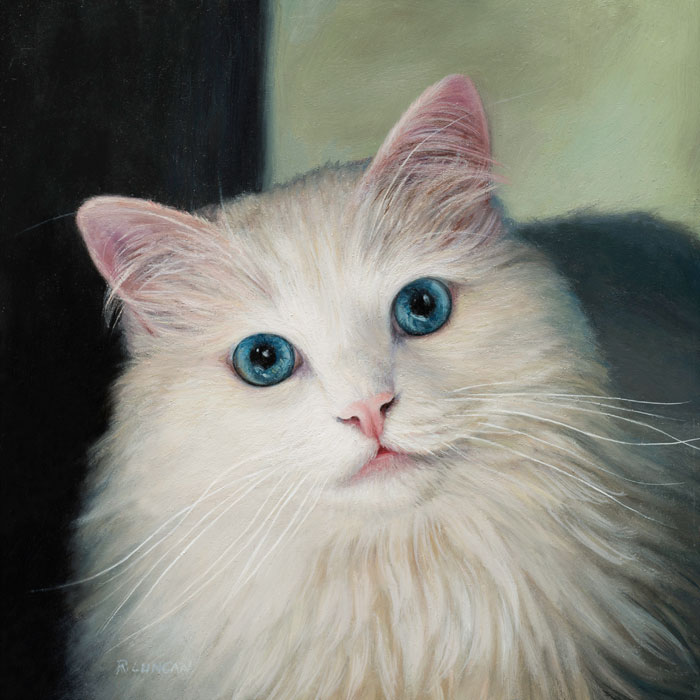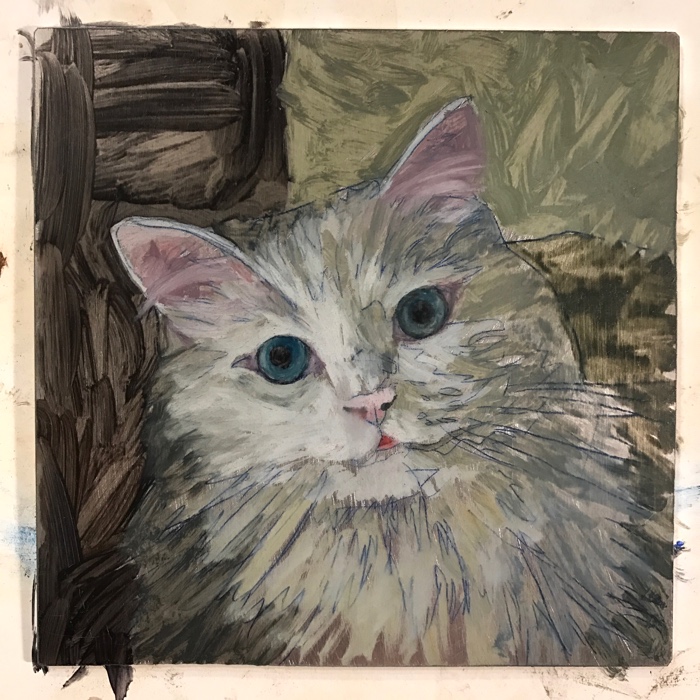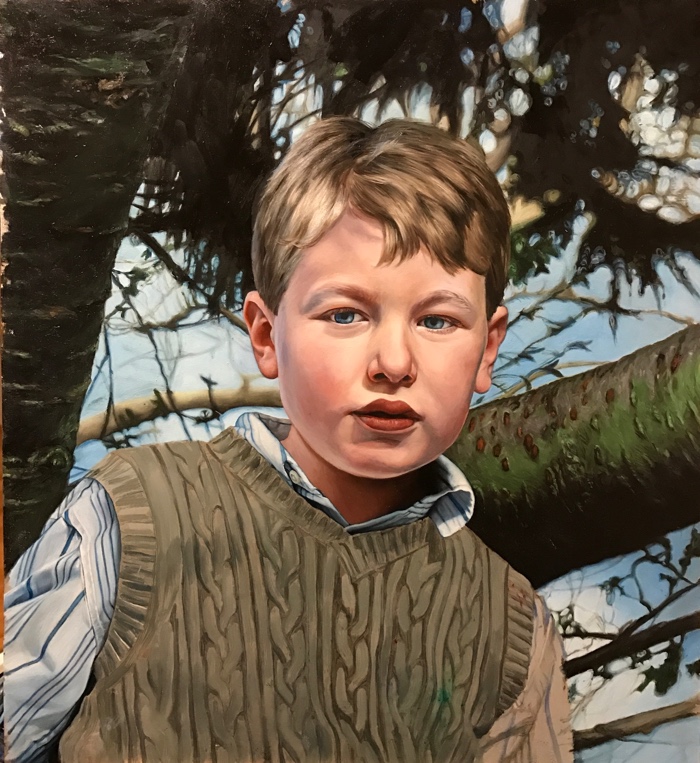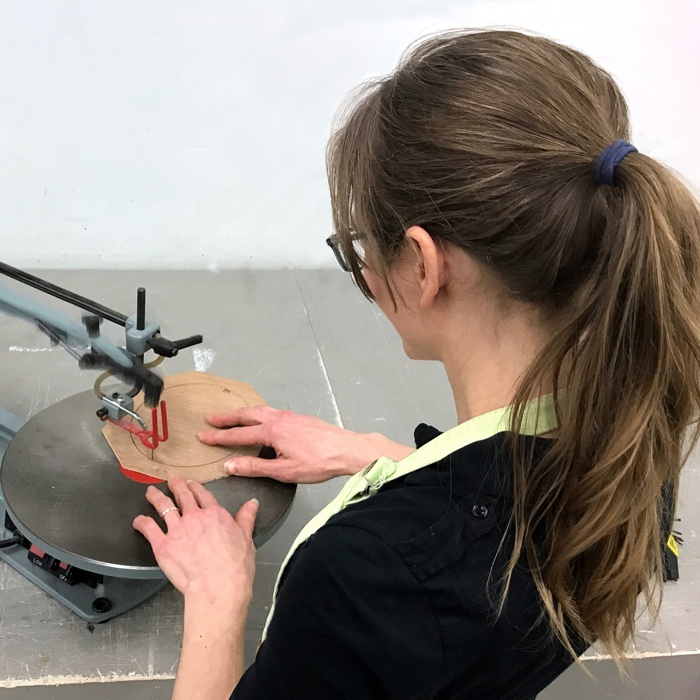
Shiro
5″ x 5″
oil on aluminum
Painting pet portraits is a journey of discovery
Years of training in traditional painting techniques and my past pet portraits form the foundation for each new piece I make. Yet with each portrait I still learn new things. Mixing just the right color still feels like making magic, and finding the precise technique to create a new texture of fur or feathers is an enchanting challenge all its own.
A perfect example is my recent cat portrait of Shiro, a fluffy white fellow with piercing blue eyes. In this case, the key technique to capture the luminosity in those beautiful eyes, as well as the soft sense of fluff, was glazing.
Glazing is a little like magic
Evidence of glazing is found in the earliest examples of painting. The idea is to apply transparent layers of oil paint atop the dried lower layers. I use Gamblin’s Galkyd media for the upper layers of my paintings and when glazing, I increase the medium enough to create transparent layers, which offer a sense of optical depth. This is one reason why painting always look better in person than when reproduced. In reproductions all the colors are flattened out and the transparent layers are lost.
Glazing is typically used in just a few key areas of a painting. The areas of optical depth attract the viewer’s eye more than surrounding areas of opaque paint, so it’s a great way to help direct the eye of the viewer around a composition and create focal points. Gamblin has a list of pigments that are ideal for glazing on their website. I used Phthalo Blue, Phthalo Green, and a touch of Indian Yellow in Shiro’s eyes.
From Dawn:
We absolutely love the picture. You rendered him so beautifully! We have a special spot in the house to hang the picture so we can look at it every day and it looks amazing.
Thank you again. It is such an honor and a treat to have a piece of your art and it is so special that it is of Shiro who we love so much.
Thanks so much for the commission, Dawn!
See more examples of my paintings on the Pet Portraits page and learn about the commission process on the Commissions page.



